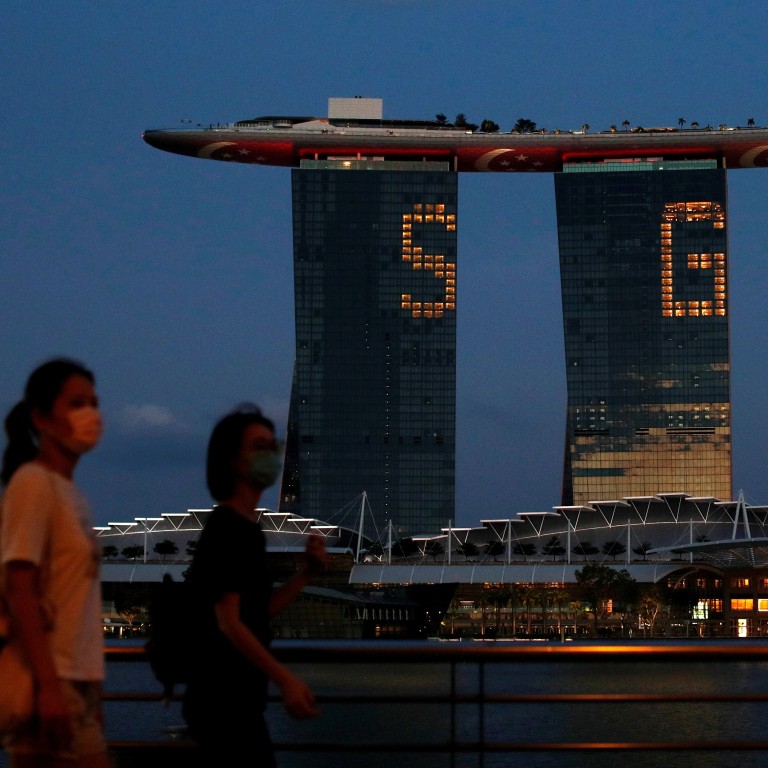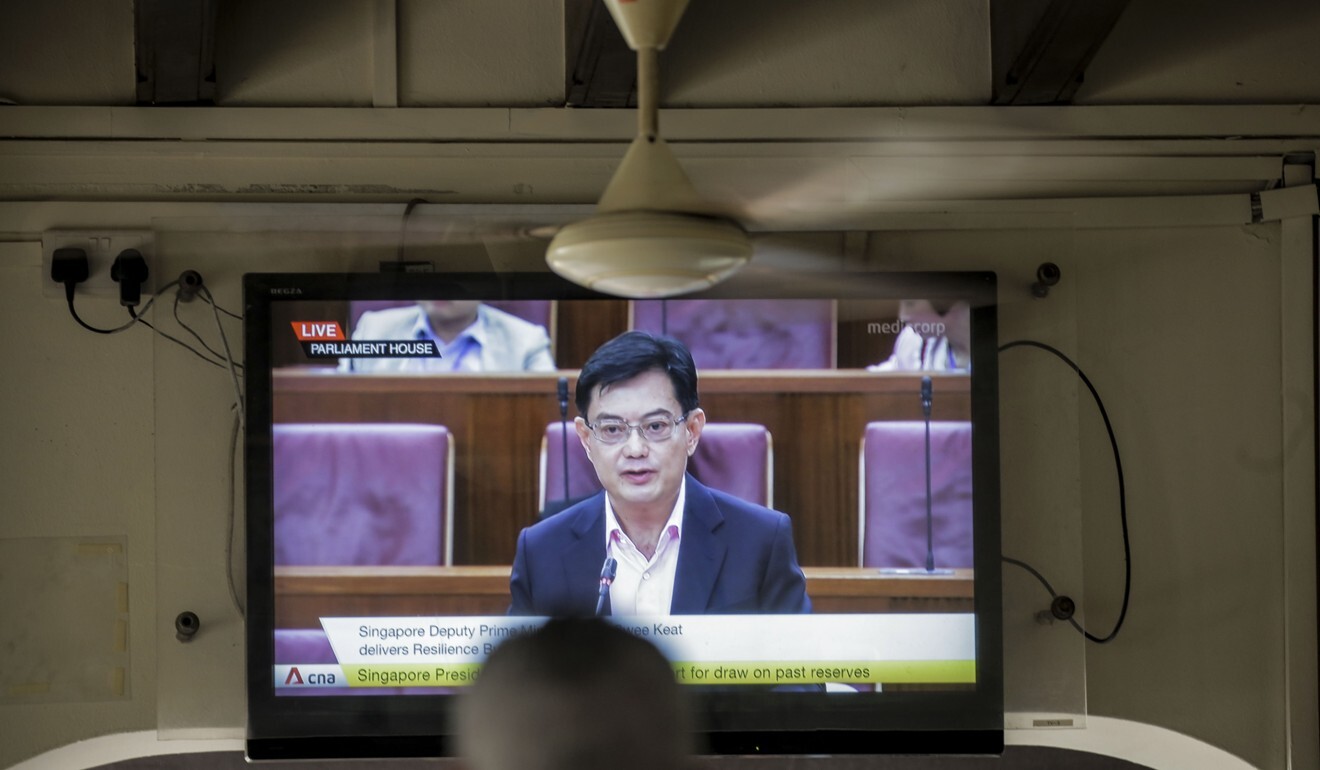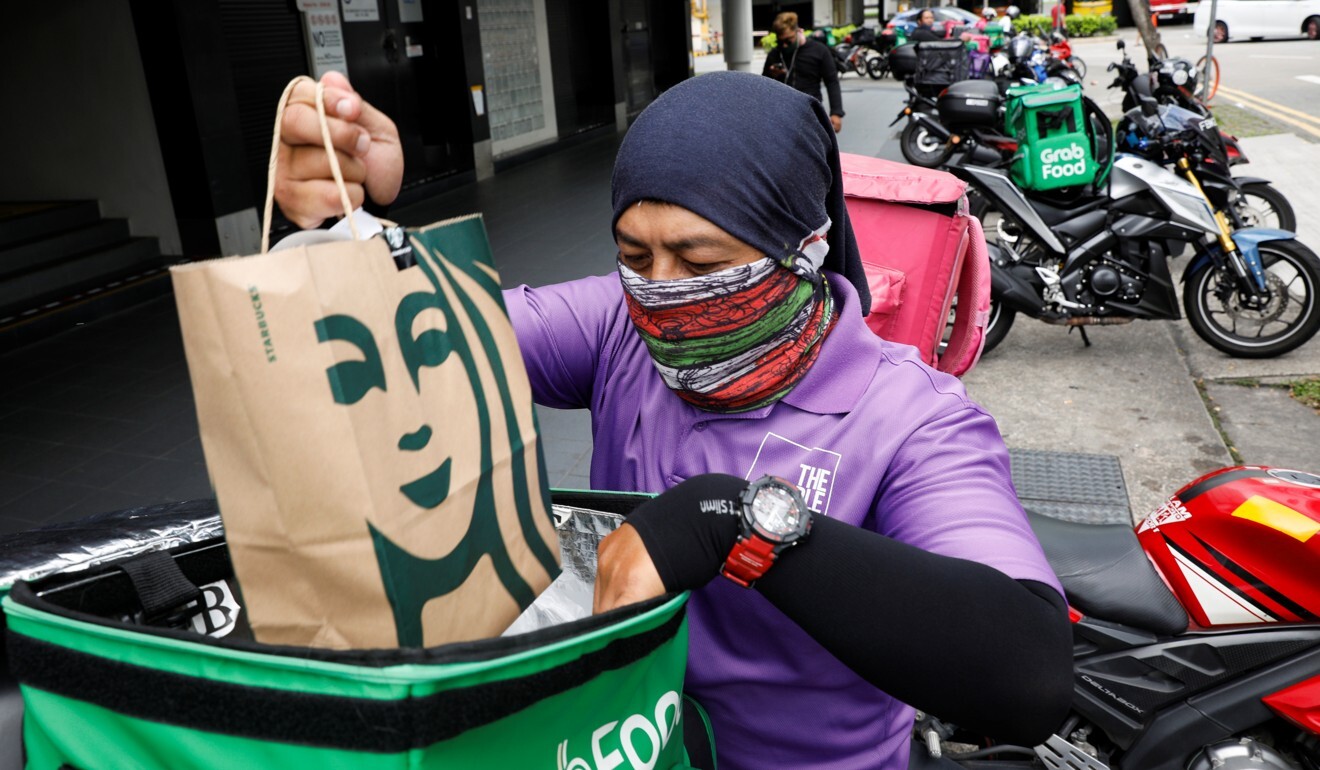
Singapore unveils fourth stimulus budget of US$23.2 billion to save jobs
- Total injections to shore up the city state’s coronavirus-battered economy will now amount to US$65.4 billion
- Finance Minister Heng Swee Keat described the so-called Fortitude Budget as ‘a necessary response to an unprecedented crisis’
Economists and market watchers had expected the fourth round of measures to have amounted to no more than S$10 billion, and had viewed today’s announcement as an extension to the over S$60 billion of measures that Prime Minister Lee Hsien Loong’s government had rolled out in three phases since February.
The new plan detailed in Parliament on Tuesday by Lee’s deputy Heng Swee Keat – also the finance minister – upended those projections. With the latest so-called Fortitude Budget, the country’s total stimulus now stands at S$92.9 billion, which amounts to 19.2 per cent of GDP.

“This is a landmark package, and a necessary response to an unprecedented crisis,” said Heng.
“The central focus of this budget is jobs. This budget will continue to support workers and businesses who remain affected by border closures and safe distancing measures,” Heng, the presumptive successor to Prime Minister Lee, told lawmakers.
“Given the significant changes in the global economy ahead, we will provide support to enable our businesses and workers to adapt, transform and seize new opportunities, to emerge stronger,” he said.
Among the key items in the latest set of measures were further enhancements to a wage subsidy scheme first rolled out in February. The government will now offset at least 25 per cent of the first S$4,600 of workers’ monthly wages for a 10-month period, up from nine months previously.
With the economy expected to gradually begin reopening next week after a partial lockdown that began on April 7, Heng also announced aid for businesses that will not be able to immediately get up and running. Gyms, fitness studios, cinemas, retail outlets and similar businesses will be able to tap the jobs support scheme for up to 75 per cent of wages until August.
Will Singapore come to regret easy loans for coronavirus-hit businesses?
That higher amount was previously granted to all firms for the duration of the partial lockdown.
Businesses that depend on foreign workers will benefit from extended rebates and waivers of levies, while some S$2 billion will be spent on offsetting the rental costs of small and medium-sized business enterprises.
Alongside the direct injections, Heng also unveiled an ambitious plan to create 40,000 jobs, 25,000 traineeships and 30,000 slots for retraining to offset expected job losses.
To support the hiring of mid-career workers, Heng said the government will double an incentive for employers to hire employees above the age of 40. Employers who sign up to this scheme will enjoy a 40 per cent subsidy on the wages of these workers for six months, up to a total cap of S$12,000.
A large portion of the last three rounds of stimulus packages were allocated to the wage subsidy scheme. It was enhanced twice as the scale of the pandemic’s economic impact became more apparent.

This fiscal firepower notwithstanding, the country’s bellwether economy is still expected to contract between 7 per cent and 4 per cent this year, according to the trade ministry’s latest forecast released earlier on Tuesday.
That projection has put the country on course for its worst contraction since 1964, when it experienced a 3.2 per cent contraction.
The data released on Tuesday showed the economy shrank by 0.7 per cent in the first quarter, an upwards revision from earlier flash estimates that put the figure at 2.2 per cent decline on a year-on-year basis.

Heng last week called on the president to make the government’s case for a fresh drawdown on the reserves, which are widely believed to amount to more than S$1 trillion.
“Having deliberated and considered the recommendation of the Council of Presidential Advisors, I am satisfied that the fourth support package is necessary to ensure a safe transition to this new normal for Singapore,” Halimah wrote in the post.
In his speech, Heng said the latest set of measures would be funded by a further drawdown of S$31 billion from past fiscal reserves. The government previously sought the approval of the president to draw down S$21 billion to fund the second and third stimulus packages.
In addition, Heng said the government planned to add $13 billion to a special contingency fund that usually amounts to S$3 billion annually.
These funds could be tapped for unforeseeable developments that “could include public health or fiscal measures that have to be put in place quickly, if the medical or economic situation deteriorates,” Heng said.
The republic, which has strict internal rules that deter administrations from running fiscal deficits in ordinary circumstances, will register a fiscal deficit of S$74.3 billion, or 15.4 per cent of GDP.
Help us understand what you are interested in so that we can improve SCMP and provide a better experience for you. We would like to invite you to take this five-minute survey on how you engage with SCMP and the news.

